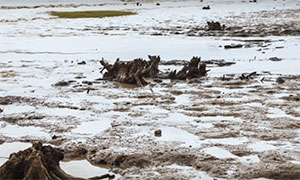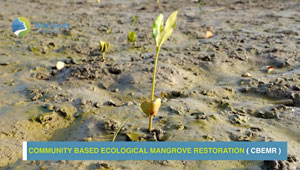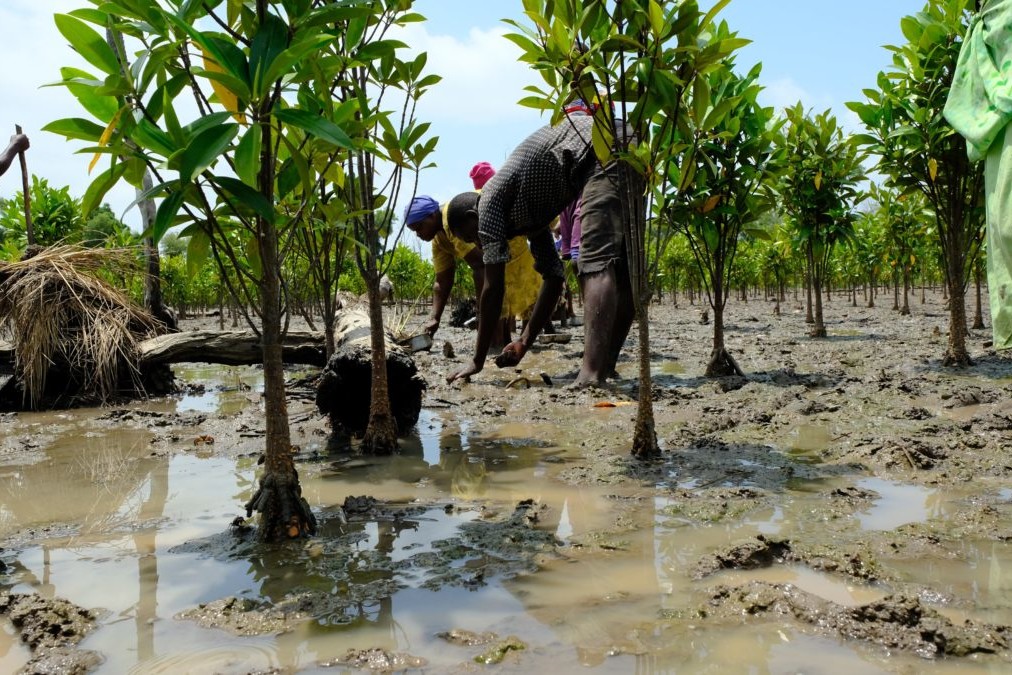|
The MAP News |
|
|
MAP Website en Español haga clic aqui
FEATURED STORY Dinara passes on the baton to new Lead Ranger Haileigh
 CAYMAN ISALNDS - It's time to say bon voyage to our peerless Ranger – Dinara Perera (left in photo) who is now in the UK to continue her degree at Leeds University. Dinara's skills have helped steer the Rangers to a super successful year. Filling her HUGE shoes is Haileigh Farrington, pictured here sharing files and knowledge with Dinara. Dinara presented (remotely) at the pre-COP 26 Youth Forum in late September and is planning to attend the COP 26 to be held in Glasgow in November. Haileigh has already taken the lead in several projects, and with 3 years working in teaching looks well set to participate in the teaching programs on Cayman’s coastal lagoon ecosystems. She is also heading up the Junior Mangrove Ranger program. We wish them both the very best - Dinara with her studies and Haileigh filling those very large shoes. With the departure of several Rangers back to college, the Mangrove Education Project (MEP) - under whose auspices the Rangers operate – ran a workshop in September to introduce Cayman’s mangrove ecosystems to 10 new Rangers. Held at ICCI, the workshop featured presentations from Lead Ranger Dinara Perera who provided a great overview of the Rangers accomplishments in the past year; Catherine Childs, Environmental Programmes Manager for the National Trust, who focused on climate change and the carbon sequestration capabilities of mangroves; Wendy Johnson, Manager of the Environmental Management Unit for Dept. of Environment, gave an overview of the Mangrove Species Conservation Law and threats to mangroves in Cayman; and Martin Keeley, Executive Director of MEP, provided an overview of the MEP’s educational and advocacy work in protecting mangroves worldwide and especially in Cayman. READ MORE RANGER NEWS GLOBAL Mangrove restoration has ecological and economic benefits 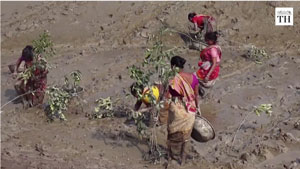 GLOBAL Funding to restore mangrove forests is money well spent, according to a new meta-analysis by ecological economists. For every dollar spent to restore mangroves, the ecosystem will yield $6.83 to $10.50 in returns over the next 20 years. The range reflects different economic projections of how much immediate costs are worth compared to future benefits and reflects the significant ecological benefits that degraded habitats receive from mangrove restoration. "The most important point is that now, in the face of the post-2020 framework and the U.N. Decade on Ecosystem Restoration, we can see that yes, there are real ecological benefits and economic value in restoring mangroves," said Associate Professor Alexandros Gasparatos from the Institute for Future Initiatives at the University of Tokyo. READ MORE AFRICA Away from the world, the mangrove fishers of DR Congo  DRC - Buried in mud several metres (around 10 feet) below the surface is their prize: Clams known as bibwati, which are both a delicacy and a lifeline. The 768-square-kilometre (296-square-mile) park is a rare jewel of conservation in a world where mangroves are routinely destroyed for tourism or seafood farms. It lies on the mouth of the mighty Congo, where unique species of trees and shellfish thrive in the confluence of fresh and salt water. The men and women divers are members of the Assolongo tribe -- the only community authorised to live in the Democratic Republic Congo's Mangroves National Park. The villagers hand-fish for bibwati and -- almost literally -- live on them. The clams are boiled and their flesh taken for food. The shells are then thrown onto the river bank, joining a pile of remains that become the foundations for homes. "Our grandparents built their huts several dozen metres (yards) from where we are today," said Nzabi. READ MORE AMERICAS Still Time to Order Your Children’s Art Calendars 2022 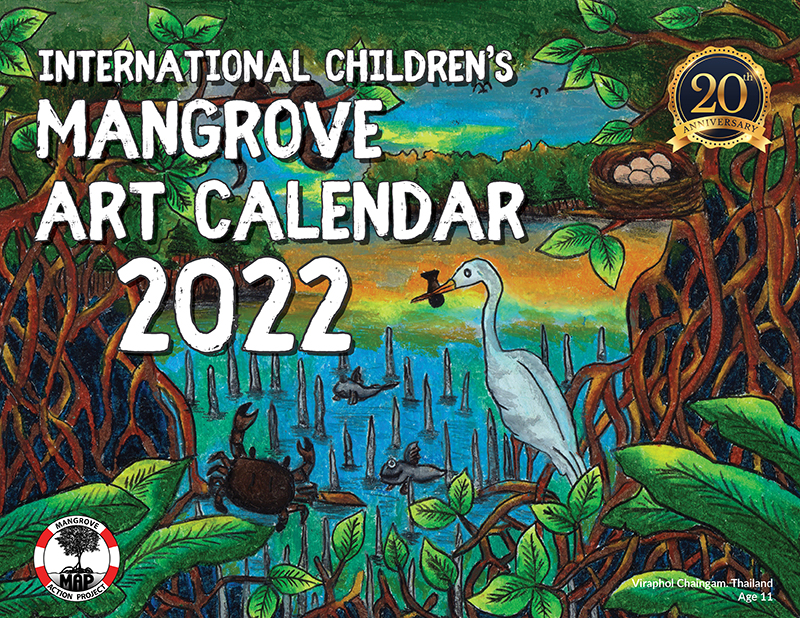 MAP’s International Children’s Art Calendars 2022 are here and ready to order! With beautiful artwork submitted by students from many countries around the world, these calendars both make a great gift, and are a helpful reminder for what we can do to assist in saving our world’s mangroves. All proceeds will go towards furthering MAP’s mission of conserving, restoring, and protecting the world’s invaluable mangrove forests. We wish to thank every child, their teachers and associate non-governmental organizations that participated and collaborated in MAP’s 20th anniversary International Children’s Mangrove Art Contest during 2021. For two decades, MAP’s art contest has been inspiring and creating awareness as well as giving the youths the opportunity to voice and express their point of view on mangrove forests and the problems mangroves face today. We are thrilled to see interest for mangroves continuing to grow among youths, inspiring creative art and learning through participation. Through the art contest, young artists discover the incredible beauty, importance, and biodiversity of mangrove forests, depicting through their art what they have experienced via mangrove field trips, or in the classroom, and home studies. ORDER HERE Mangrove seedlings collected by Cape Coral man help preserve Hemp Key 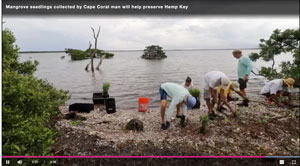 USA - Using satellite images from Google Earth, you can see what Hemp Key in Pine Island Sound looked like back in 1999, a lush island full of mangroves. But, things look much different today, and that’s all thanks to Hurricane Charley. Now there are not nearly as many mangroves as there were before, and with no protection, the island shrank to about half the size it once was. That’s a problem since the island is a vital bird sanctuary. Ben Giddins of Cape Coral, started collecting mangrove seeds from the city’s canals months ago. For six months, he’s been growing the seedlings and preparing for them to be planted where they can make a difference. When he offered them to SCCF (Sanibel-Captiva Conservation Foundation) for planting, they said Hemp Key was the perfect spot. “Most of these Mangrove Propagules were rescued from boat ramps and concrete canals where they weren’t going to grow,” Giddins said. “So we rescued them to give them a chance, and today we are planting them.” READ MORE South Florida brothers team up to restore world’s lost mangroves 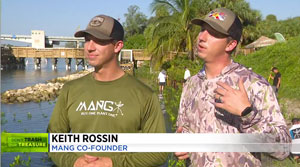 USA - For over 100 years as South Florida’s coastline was developed, acres upon acres of mangroves were destroyed in the process. In recent years we’ve begun to understand just how vital mangroves are to protecting our shores and cleaning up our waterways. Two Palm Beach County brothers recognized that and launched a company with the goal of restoring the world’s lost mangroves. They’re doing it by selling hats and shirts, changing the world by planting one mangrove at a time. “We are putting back what was once here and we are using natural elements to stabilize eroding shorelines,” said Peter Dewitt, program manager for the Bureau of Land Management of the Jupiter Inlet outstanding natural area. READ MORE ASIA G20 Bali Summit to emphasize importance of mangrove restoration  INDONESIA - The G20 Summit in Bali in 2022 will emphasize the importance of the Indonesian government's mangrove restoration program, Coordinating Minister for Maritime Affairs and Investment, Luhut Binsar Pandjaitan, has said. "President Joko Widodo will convey a message to world leaders about the importance of mangrove restoration in generating carbon credits (at the summit)," Pandjaitan remarked while inspecting mangrove plantation sites in Bali on Thursday. The program has received funding of US$1.2 billion, he said in a written statement in Jakarta on Friday. Countries and world leaders in the forum must take concrete action on mangrove restoration, he added. Currently, the government is running a mangrove restoration program in an area of 600 thousand hectares and mangrove planting in Bali is part of the mangrove restoration program, the minister said. READ MORE Indonesia slashes 2021 mangrove restoration target, vows to make up in 2022  INDONESIA - Indonesia has revised down its 2021 target for rehabilitating mangroves in light of “technical hurdles” brought about by the COVID-19 pandemic and other factors, according to the nation’s mangrove restoration agency. The new target is 33,000 hectares (81,500 acres), down from 83,000 hectares (205,000 acres), according to Hartono Prawiraatmadja, the head of the Peatland and Mangrove Restoration Agency. The larger plan to rehabilitate 630,000 hectares (1.55 million acres) by 2024 remains unchanged, he said. In 2022, “the technical hurdles that we encountered in 2021 will no longer be there,” Hartono told journalists during a virtual press conference in October. Indonesia is home to more than a quarter of the world’s mangroves — gnarled trees and shrubs that grow in sheltered, tropical coasts, where they buffer coastal communities against storm surges, tsunamis and sea-level rise, and bolster local livelihoods. READ MORE Less freshwater inflow into Persian Gulf threats mangrove forests  IRAN - Mangrove forests grow where the freshwater of the river enters the saltwater of the sea, which creates a unique ecosystem, however, dam construction and agricultural development reduced the inflow of freshwater leading to the destruction of the mangroves. Experts believe that, of course, Iran's drought and the lack of rainfall in the last two decades have paced up the depletion, and all these issues together endangered the lives of these valuable trees. Southern Iran is one of the most important habitats of these plant species, covered by 22,000 hectares of these forests. Earlier in October, Qasem Taqizadeh, deputy minister of energy for water and wastewater said that Iran’s renewable water resources have decreased from 130 billion cubic meters to about 102 billion cubic meters in less than 30 years, showing a 22 percent decline. If the current trend continues, the country will lose five billion cubic meters of renewable water resources annually, which means that the water resources will be halved by the next 10 years, he added. Over the past water year (September 2020- September 2021), the country was 37 percent short of rain compared to the long average in the last 52 years; and water in the reservoirs of 199 national dams has reached a minimum, decreased by about 30 percent. These statistics show that the country's water resources are not in good condition and need support. Researchers believe that the spread of drought is slow, but its effects may last for years. READ MORE The women saving the Sunderbans 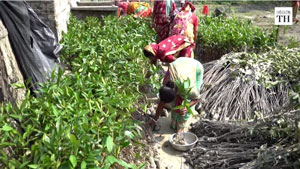 BANGLADESH - Sunderbans, the world's largest mangrove forest, is regularly battered by intense monsoon storms. With India facing ever more powerful cyclones and extreme weather, women from the Sunderbans have taken up the task of protecting their coastal communities. They are planting thousands of saplings to help buffer coastal communities from the cyclones that course through the area. The women first rear the saplings at fresh water nurseries set up near their homes. It takes around 45 days for the saplings to become strong enough to then be replanted in nearby rivers beds for another 15 to 20 days. Once the saplings are strong, they are transplanted on to the banks to build the green embankments. The entire process takes around two to three months. The mangrove takes about three to four years to grow into a tree. This entire project is backed by a local non-profit and the West Bengal government. READ MORE Indonesia's batik-makers turn to mangroves as demand grows for eco-dyes 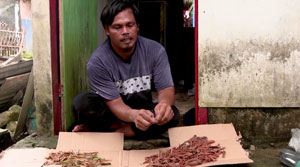 INDONESIA - In a quiet mangrove forest in central Indonesia, a man moves gingerly across vegetation distinguished by its big, wooden stilt roots, searching for fallen mangrove fruits that rest on leaves or float on the water. Gathering a handful of what looks like string beans, the man, a batik craftsman, heads home to make natural dye from them.For the past four years, Sodikin, 48, and his group of batik makers have shifted from using chemical materials for colouring to mangrove-based products, cutting costs and helping the environment. "We use natural materials so as to preserve the mangrove forest at the same time," Sodikin, who uses only one name, told Reuters as he processed dried fruits before boiling them to extract colour. "We do not cut down the trees and we only take fruits or leaves that have fallen." Batik is a traditional Indonesian dying used in patterns and drawings, typically on fabric and finished textiles. READ MORE
|
ACTION ALERTS Stop construction work on a private port In Defense of the Quilombo Boca Do Rio TAKE ACTION! Tell Sumitomo to stop building polluting coal power in Bangladesh! TAKE ACTION!
MAP Website en Español PRINTING EARLY NOV 13 Year old Linda Li "Mangrove Adventure" from Kid Dream Art School
Video: Mangroves for the Future WANT TO GET INVOLVED?
Like this newsletter? Pease consider donating to MAP to keep it going. Giving could never be easier
Interested in connecting or working with MAP? Check out our opportunities here MANGROVE ISSUES Want to learn more about mangroves? What is CBEMR? Download MAP's 2 page CBEMR Information Sheet containing links to all MAP's CBEMR resources – CLICK HERE View MAP’s uploaded Videos at Question Your Shrimp Consumer/Markets Campaign! Mangroves: Guidebook to Malaysia – Click Here SHARE MAP'S VISION Our short documentary, Reducing the Risk of Disaster through Nature-Based Solutions : Mangroves Marvellous Mangroves Curriculum The Marvellous Mangroves Curriculum begins with a simple philosophy – getting future generations to not only learn about, but understand the importance of mangrove forests. VISIT
Marvellous Mangroves Curriculum in Bangladesh - WATCH VIDEO
Like this newsletter? Pease consider donating to MAP to keep it going. Giving could never be easier
"Question Your Shrimp" Campaign Question Your Shrimp - is it really sustainable? Sign the Petition
We strive to keep active links in our newsletter. However, due to circumstances beyond our control, occasionally links to stories may become broken. If you find a link to a story is not functioning, please cut and paste the headline into your browser search bar. In most cases you should be able to locate the original story. Not yet a MAP News subscriber? |
|
Mangrove Action Project Click here to view past newsletters
|
|
Search News Archive
Saturday, November 27, 2021
MAP News Issue 534 - Nov 27, 2021
Saturday, November 13, 2021
MAP Issue #533 - Nov 13, 2021
|
The MAP News |
|
|
MAP Website en Español haga clic aqui
FEATURED STORY REMINDER: ORDER YOUR MAP International Children’s Art Calendars 2022
 MAP’s International Children’s Art Calendars 2022 are here and ready to order! With beautiful artwork submitted by students from many countries around the world, these calendars both make a great gift, and are a helpful reminder for what we can do to assist in saving our world’s mangroves. All proceeds will go towards furthering MAP’s mission of conserving, restoring, and protecting the world’s invaluable mangrove forests. We wish to thank every child, their teachers and associate non-governmental organizations that participated and collaborated in MAP’s 20th anniversary International Children’s Mangrove Art Contest during 2021. For two decades, MAP’s art contest has been inspiring and creating awareness as well as giving the youths the opportunity to voice and express their point of view on mangrove forests and the problems mangroves face today. We are thrilled to see interest for mangroves continuing to grow among youths, inspiring creative art and learning through participation. Through the art contest, young artists discover the incredible beauty, importance, and biodiversity of mangrove forests, depicting through their art what they have experienced via mangrove field trips, or in the classroom, and home studies. ORDER HERE GLOBAL ‘Rich nations must pay for African conservation’ 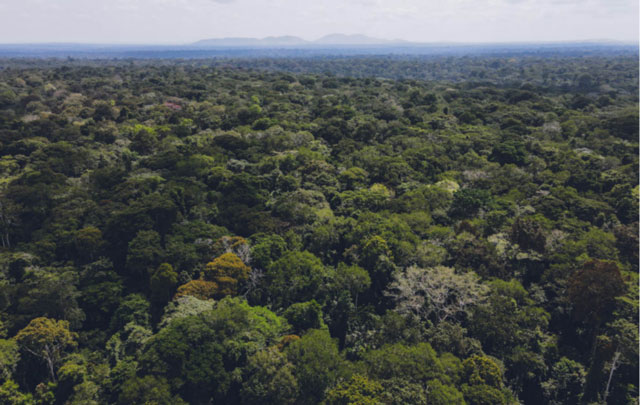 GLOBAL - African leaders, business executives, and climate change activists have stressed the need for financial resources to be mobilized to ensure that the African continent restores and protects its critical ecosystems which are critical in sucking in and storing carbon. These include; Africa’s savannahs, mangroves and swamps, coral reefs and marine reserves. The sentiments came out on Nov.03 during a high level event on the sidelines of the ongoing global climate conference in Glasgow, Scotland. This was two days after leaders from over 100 countries pledged “to end deforestation by 2030.” The side event was organised by the Giants Club, an initiative of the international conservation organisation, Space for Giants, which operates in 10 African countries including; Botswana, Gabon, Kenya, Rwanda and Uganda and is dedicated to ensuring a healthy planet on which both large wild animals like elephants and people exist. President Uhuru Kenyatta of Kenya headlined the event alongside Max Graham, the founder and CEO of Space for Giants who chaired and moderated the event, Lord Evgeny Lebedev, who co-hosted the event with President Kenyatta, Peter Bacchus, a veteran investment banker who is the chairman of Bacchus Capital, and Akinwumi Adesina, the president of the African Development Bank. READ MORE AFRICA Gabon plumbs carbon mystery of its mighty mangrove trees /cloudfront-us-east-2.images.arcpublishing.com/reuters/5PAI6MQWXRMLNAJR63L3F3XXUE.jpg) GABON - The towering trees in Gabon's impenetrable mangrove swamps have helped to make the Central African country one of the world's few net absorbers of carbon as the plants sequester the greenhouse gas four times faster than forests on land. While the world struggles to curb climate change and U.N. talks on the issue begin at the end of the month, countries such as Gabon are trying to work out exactly how much carbon is locked in their mangroves. "We do not really have a lot of information on the mangrove forests compared to the terra firma forests," said Vincent Medjibe, who collects carbon data for Gabon's National Parks Agency. "We're working on it." Across the estuary from the mangrove-rich Pongara National Park, the growing capital Libreville exemplifies the threat mangroves face. In one outer neighbourhood, dry tussocks and muddy holes are what remain of a former swamp that has been illegally cleared for construction. As well as storing carbon, the swamps are rich in wildlife and serve as natural flood defenses. READ MORE AMERICAS Restoring Mexico's mangroves can shield shores, store carbon  MEXICO - When a rotten egg smell rises from the mangrove swamps of southeast Mexico, something is going well. It means that this key coastal habitat for blunting hurricane impacts has recovered and is capturing carbon dioxide — the main ingredient of global warming. While world leaders seek ways to stop the climate crisis at a United Nations conference in Scotland this month, one front in the battle to save the planet’s mangroves is thousands of miles (kilometers) away on Mexico’s Yucatan Peninsula. Decades ago, mangroves lined these shores, but today there are only thin green bands of trees beside the sea, interrupted by urbanized areas and reddish segments killed by too much salt and by dead branches poking from the water. A few dozen fishermen and women villagers have made building on what’s left of the mangroves part of their lives. Their work is supported by academics and donations to environmental groups, and government funds help train villagers to organize their efforts. The first time they came to the swamp for seasonal restoration work was more than a decade ago with Jorge Alfredo Herrera, a researcher at the Center for Research and Advanced Studies of the Mexican Polytechnic Institute in Yucatan. He told them the mangroves needed a network of interlaced canals where fresh and salt water would mingle. READ MORE Blue carbon: the hidden CO2 sink that pioneers say could save the planet 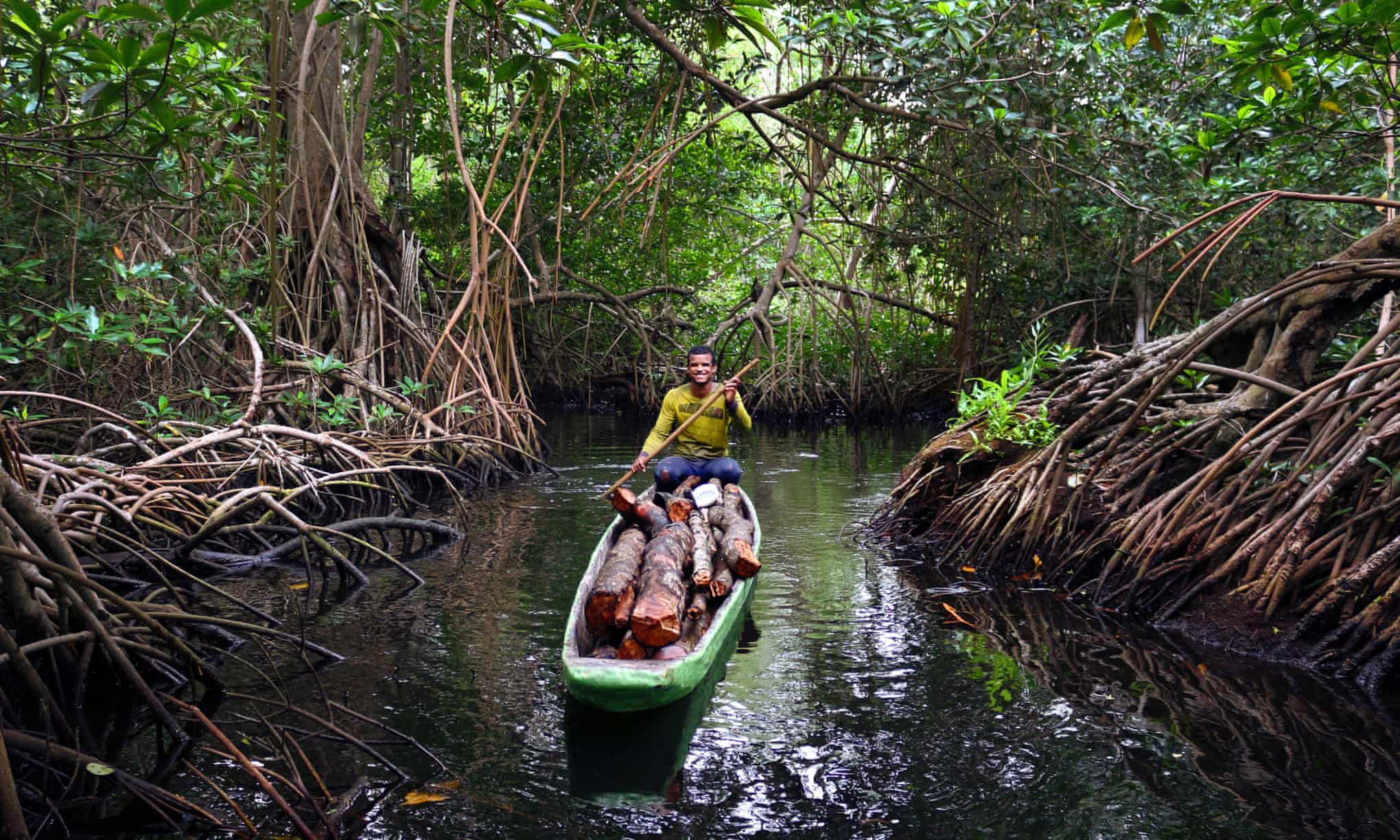 COLUMBIA - Off the Caribbean coast of Colombia, rare manatee calves have been spotted in the canals and rivers of Cispatá Bay’s mangrove forests. The once-critically endangered American crocodile is now seen more frequently. Birds and lizards nest in the branches, fish and shrimps use the roots as nurseries. These 11,000 protected hectares (27,000 acres) of mangroves are a biodiversity hotspot. But the Cispatá conservation project, a collaboration between Colombia’s Marine and Coastal Research Institute (Invemar), Conservation International (CI) and Apple, is not just of interest to birdwatchers and ecologists. It has attracted the attention of marine scientists, researchers and corporations, as it is among the first to measure and sell a new type of credit to fund conservation: “blue carbon”. Mangroves, like other coastal wetlands, are powerful carbon sinks. That is, they suck up carbon dioxide from the air to store in their roots and branches, as well as the sediment that collects around them. They do this so well that they can store up to 10 times more carbon than forests. READ MORE ‘We can’t live like this’: climate shocks rain down on Honduras’s poorest 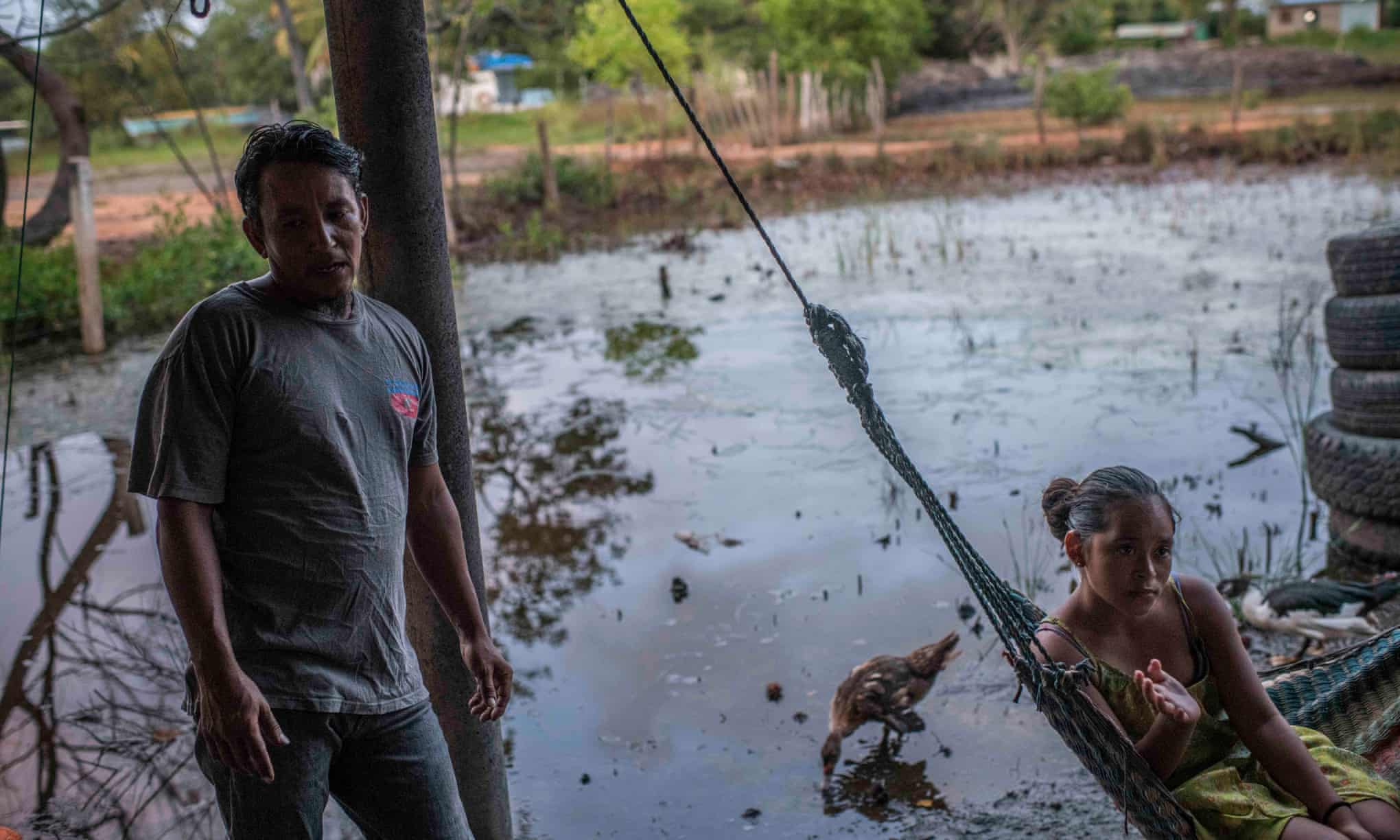 HONDURAS - It was around dusk on the third consecutive day of heavy rain when the River Aguán burst its banks and muddy waters surged through the rural community of Chapagua in north-east Honduras, sweeping away crops, motorbikes and livestock. Most inhabitants fled to higher ground after the category 4 Hurricane Eta made landfall in early November 2020, but fisherman Rosendo García stayed behind, hoping to safeguard the family’s home and animals. After a ravine on the opposite side of the village also flooded, there was no way out. Inside his single-storey brick house, the water quickly rose from knee-deep to chest high. “It was so fast, like milk when it boils,” said García, 55. He escaped once the water subsided a few days later with just one pig, a few chickens and a dog. But shortly after, a landslide carried the entire house into the river, taking everything the family owned, including fishing nets, furniture and most of the animals. More than 40 sacks of freshly harvested corn were ruined, the once-fertile land buried under sand. Garcia’s entire extended family was left destitute. READ MORE How Belize is Transforming the Caribbean 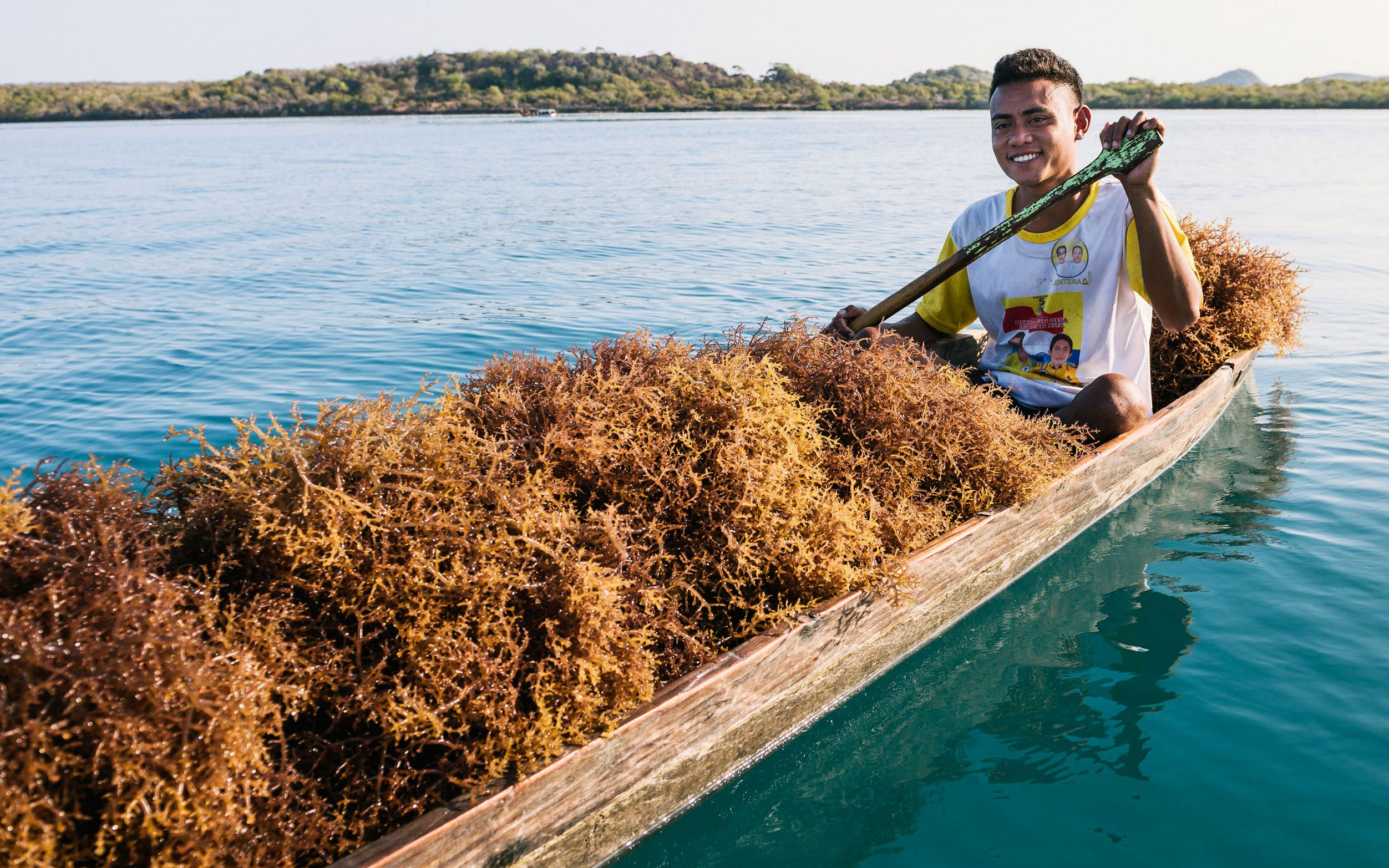 BELIZE - By many accounts, Belize is a conservation success story, and a role model when it comes to climate and biodiversity action. While the country is only about the size of the U.S. state of New Jersey, it is dense with flora and fauna unique to this part of the Caribbean and Central America, and much of that treasure lies along its cerulean coast. But the nation’s natural assets are more than just a point of pride: they represent a large and vital part of its economy. The Belize Barrier Reef System features three of four coral atolls in the Atlantic, lush mangrove forests, numerous offshore islands, and one of the most extensive seagrass areas in the Caribbean. It hosts 77 species listed as threatened by the IUCN, including a sizeable population of West Indian Manatees. Now, Belize has reaffirmed its environmental leadership by becoming the first country in the Americas to finalize a debt conversion for ocean conservation—and one that represents an impact investment for marine protection that’s unprecedented in scale. This commitment will enable Belize to restructure approximately US$550 million of external commercial debt—an amount that represents 30 percent of the country’s GDP—and reduce the national debt by 12 percent. READ MORE ASIA Anawilundawa Wetland Regeneration Project: WNPS achieves key milestones with Hemas PLC’s support SRI LANKA - Sri Lanka’s current mangrove cover, estimated to be 15,000 to 19,000 hectares, is a mere 0.3% of the total landmass and is critically low; putting the island at risk from the impact of climate change and natural disasters such as storm surges and tsunamis. Mangroves are an integral part of our forests and constitute about 2% of Sri Lanka’s total forest cover – they are very much a part of the fast dwindling 17% of our primary forests.WNPS’s Accelerated Natural Regeneration of Mangroves (ANRM) project was launched with the goal of regenerating the damaged mangrove habitats in Anawilundawa Wetlands and building sustainable livelihoods in surrounding communities. The project aims to restore approx. 45 hectares (110 acres) of the mangrove ecosystem at Anawilundawa, which have been destroyed due to shrimp farming. This important conservation project is to be conducted by Sri Lanka’s Department of Wildlife Conservation (DWC), Department of Forests (FD), Wayamba University (Science Partner), facilitated by the Wildlife and Nature Protection Society (WNPS). READ MORE GOB is to cancel 6 more coal power plants 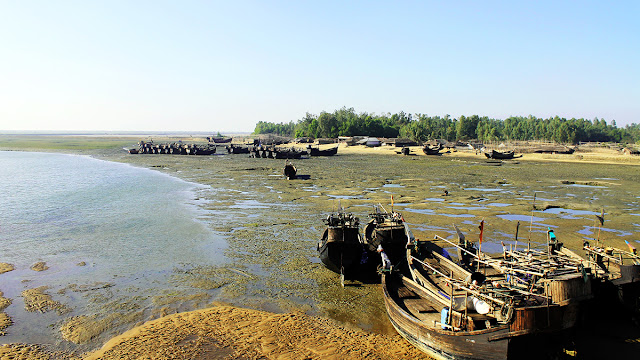 BANGLADESH - The Government of Bangladesh (GOB) is to declare the cancellation of 6 more coal-fired power plants which were planned to be developed on the Maheshkhali Islands. The total capacity of these planned power plants is 7920 MW. The enlisted power plants to be cancelled are: Maheshkhali 1320 MW (BPDB-CHDHK) Coal Power Plant (Phase-I) Maheshkhali 1320 MW (BPDB-CHDHK) Coal Power Plant (Phase-II) Maheshkhali 1320 MW (BPDB-TNB) Coal Power Plant Maheshkhali 1320 MW (BPDB-KEPCO) Coal Power Plant Maheshkhali 1320 MW (BPDB-SEPCO) Coal Power Plant; and Maheshkhali 1320 MW (BR PowerGen) Coal Power Plant Earlier in June 2021, the Government cancelled 10 approved coal power plants in different zones of Bangladesh. Among those, two power plants with a capacity of 2640 MW were based on the Maheshkhali Islands. The GOB had a plan to develop 10 coal power plants with a capacity of 12960 MW on the island. Among those, Matarbari 1200 MW Phase-I financed the Japan International Cooperation Agency (JICA) and sponsored by the Coal Power Generation Company Bangladesh Limited (CPGCBL) is under construction now and a feasibility study of Matarbari 1200 MW Phase-II is going on. Two power plants - Maheshkhali Coal Power Plant (Phase-I) and Maheshkhali Phase-II were cancelled in June 2021. READ MORE Women Plant Mangroves To Bolster India’s Cyclone Defences 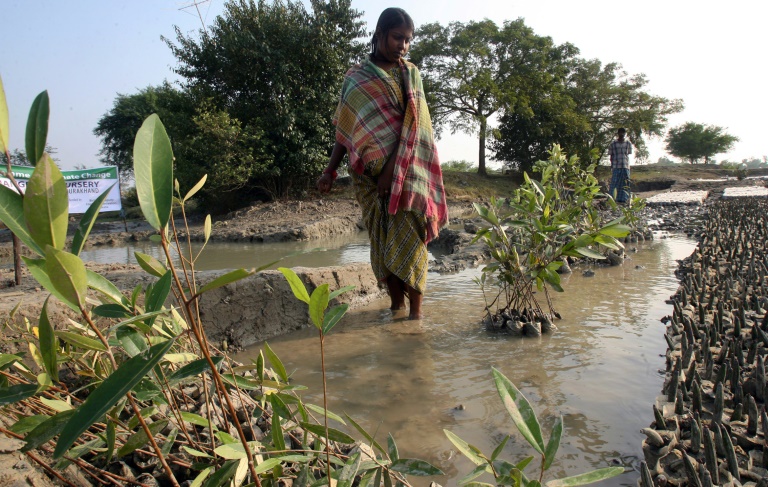 INDIA - With India facing ever more powerful cyclones, women in the world’s largest mangrove forest are planting thousands of saplings to help protect their coastal communities from climate change. The Sundarbans straddle the coastline into neighbouring Bangladesh and are home to some of the world’s rarest creatures, including the Bengal tiger and the Irrawaddy dolphin. The forest has been designated a World Heritage site but has in the past suffered from illegal logging and is regularly battered by intense monsoon storms. Walking ankle-deep along a muddy shore, and balancing young plants on their heads, a group of local women last week began the long process of reforesting a bare stretch of coastline. “This is an area prone to storms and cyclones,” said Shivani Adhikari, one of the women involved in the initiative. “So to protect the embankments, all of us women are planting.” READ MORE
|
ACTION ALERTS Stop construction work on a private port In Defense of the Quilombo Boca Do Rio TAKE ACTION! Tell Sumitomo to stop building polluting coal power in Bangladesh! TAKE ACTION!
MAP Website en Español PRINTING EARLY NOV 13 Year old Linda Li "Mangrove Adventure" from Kid Dream Art School
Video: Mangroves for the Future WANT TO GET INVOLVED?
Like this newsletter? Pease consider donating to MAP to keep it going. Giving could never be easier
Interested in connecting or working with MAP? Check out our opportunities here MANGROVE ISSUES Want to learn more about mangroves? What is CBEMR? Download MAP's 2 page CBEMR Information Sheet containing links to all MAP's CBEMR resources – CLICK HERE View MAP’s uploaded Videos at Question Your Shrimp Consumer/Markets Campaign! Mangroves: Guidebook to Malaysia – Click Here SHARE MAP'S VISION Our short documentary, Reducing the Risk of Disaster through Nature-Based Solutions : Mangroves Marvellous Mangroves Curriculum The Marvellous Mangroves Curriculum begins with a simple philosophy – getting future generations to not only learn about, but understand the importance of mangrove forests. VISIT
Marvellous Mangroves Curriculum in Bangladesh - WATCH VIDEO
Like this newsletter? Pease consider donating to MAP to keep it going. Giving could never be easier
"Question Your Shrimp" Campaign Question Your Shrimp - is it really sustainable? Sign the Petition
We strive to keep active links in our newsletter. However, due to circumstances beyond our control, occasionally links to stories may become broken. If you find a link to a story is not functioning, please cut and paste the headline into your browser search bar. In most cases you should be able to locate the original story. Not yet a MAP News subscriber? |
|
Mangrove Action Project Click here to view past newsletters
|
|
-
The community of adults and youth in Cayman Islands has come together recently to release a series of educational videos. Each is geared to...
-
By Alfredo Quarto, Program & Policy Director Co-founder, MAP There is a rather urgent situation concerning the bio-invasion of the Son...
-
By: Isabel Robinson, MAP Volunteer Intern Some months ago I decided to come to Thailand and do an internship in mangrove conservation, ...
MAP News Issue #596 = April 20, 2024
ENTRIES NOW OPEN! Mangrove Photography Awards 2024 10 Years Celebrating Mangroves GLOBAL - MAP has launched our 10th Mangrove Photograp...




